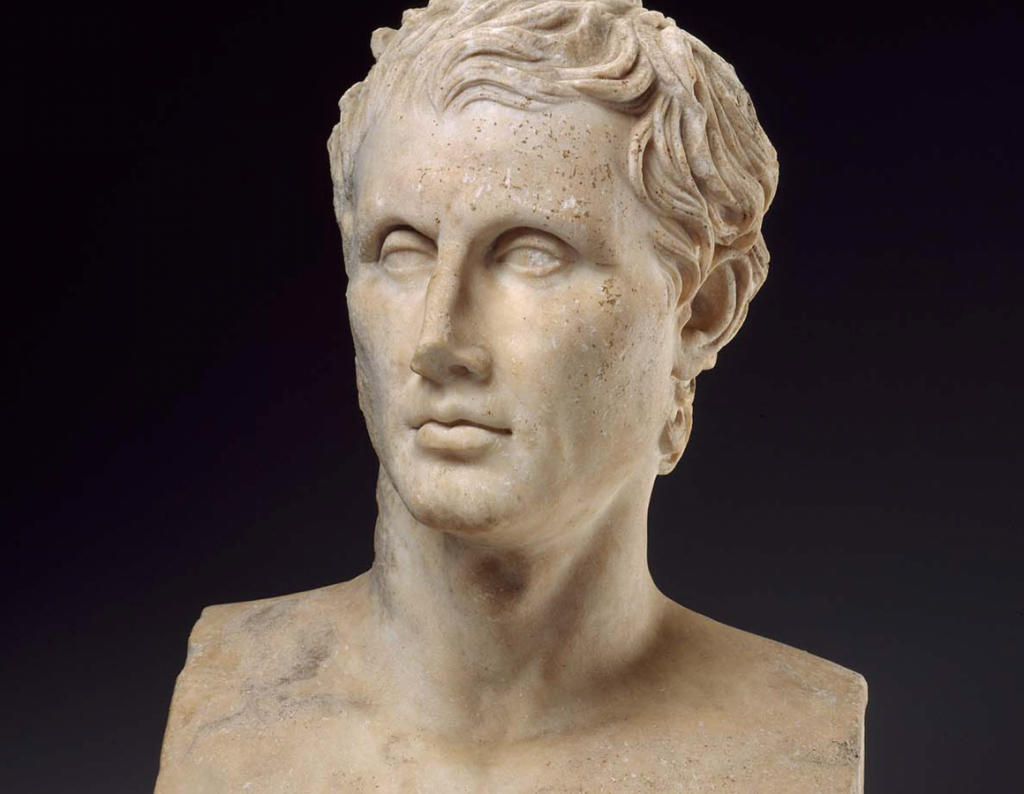Do people learn more at art museums when chronology governs a display or when a thematic narrative rules? It’s a perennial question, and traditionally many museums with extensive collections answer it with the former because, with a broad, deep array of art in a particular category, they can. Less well-endowed collections have often gone the thematic route simply because they can’t do a civilization or a period justice with their skimpy (or gap-filled) holdings.
 But not always. Lately more museums are going narrative because they thing visitors find it more appealing. So it was not perhaps surprising that the Museum of Fine Arts in Boston will on Tuesday open three Ancient Greek galleries, encompassing about 230 objects, with themes: wine, in Dionysos and the Symposium; poets in Homer and the Epics; and performers in Theater and Performance. The three galleries have been renovated for the new first-time thematic displays, and many of the pieces have been conserved.
But not always. Lately more museums are going narrative because they thing visitors find it more appealing. So it was not perhaps surprising that the Museum of Fine Arts in Boston will on Tuesday open three Ancient Greek galleries, encompassing about 230 objects, with themes: wine, in Dionysos and the Symposium; poets in Homer and the Epics; and performers in Theater and Performance. The three galleries have been renovated for the new first-time thematic displays, and many of the pieces have been conserved.
That’s dramatist Menander, c. 1st C BC – 1st C AD, at right.
I haven’t seen these displays, but I’m for the trial. Even if you look at the small selection of objects for these galleries online, you’ll notice a lot of painted red-on-black vases and marble sculptures. In many a museum, faced with a sea of them — particularly the vases — visitors naturally tune out of the details because there are so many. One must be really patient, truly study the vases, to appreciate them in full.
Here, perhaps themes will help.
According to the press release announcing this change, MFA is also deploying technology to help:
The MFA’s renowned collection of Greek art contains some of the most visually complicated objects in the Museum. iPads will be placed near two particularly detailed vases in order to explain the narratives and “unpack†their symbols. Visitors can discover details they may not have otherwise noticed (similar to “Looking Closer” interactives in the Benin Kingdom Gallery and Kunstkammer Gallery).  In the Homer Gallery, one iPad will focus on the Mixing bowl (calyx krater) with scenes from the fall of Troy (about 470–460 BC). Circled by a continuous frieze of episodes from the Greek sack of the city of Troy, depictions include images of the priestess Kassandra, King Priam of Troy and the Trojan warrior Aeneas. The iPad in the Theater and Performance gallery highlights the Mixing bowl (volute krater) with the Death of Thersites(about 340 BC)—an elaborate vase that was probably influenced by a lost play. Depicted are Achilles, who has just beheaded Thersites, as well as divinities and a number of characters from the Iliad.
Is this a populist move that will be criticized as pandering? It may, but — sight unseen, mind you — I don’t think, in concept, it should be.
Photo Credit: Courtesy of the MFA, Boston
